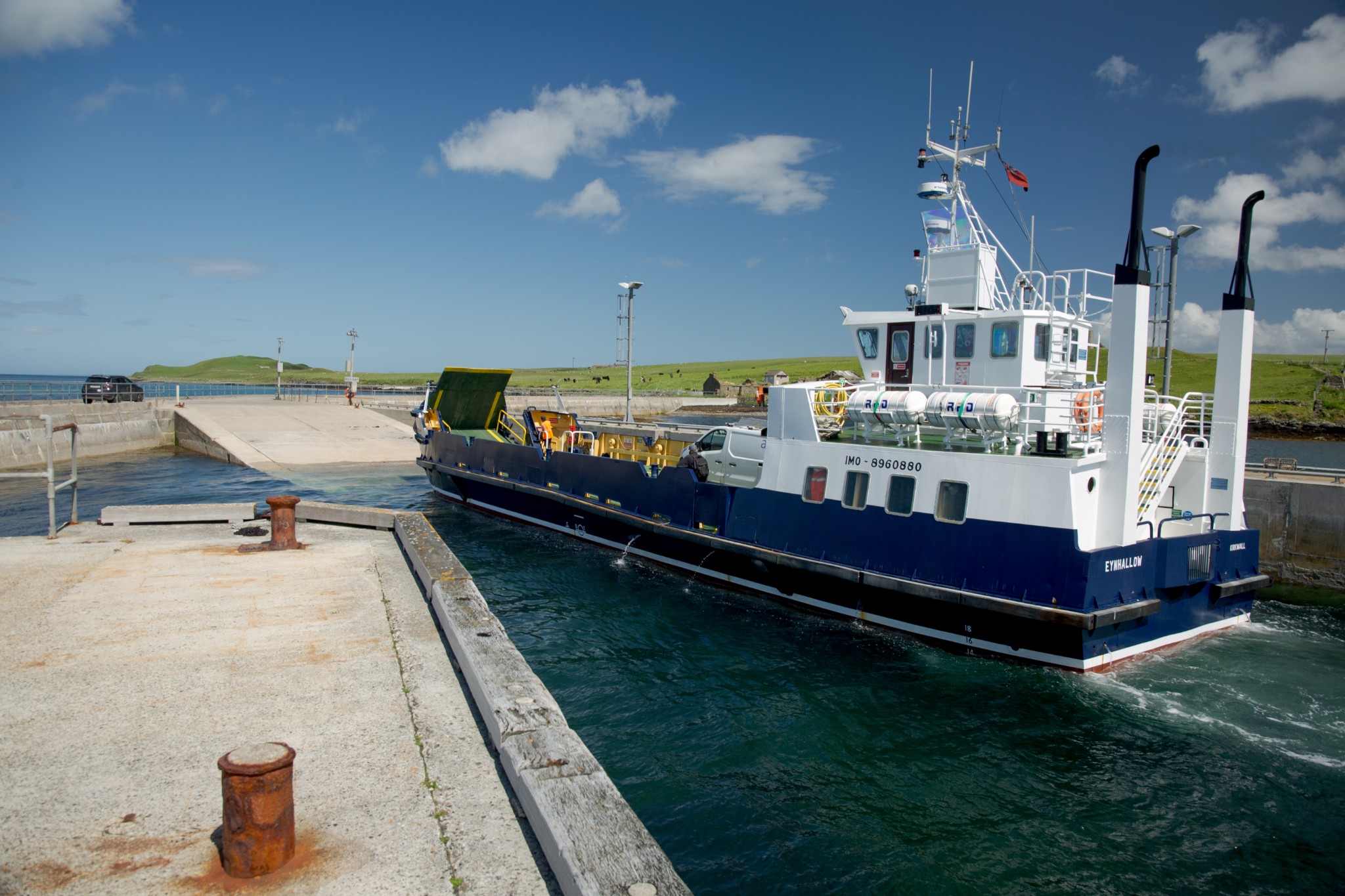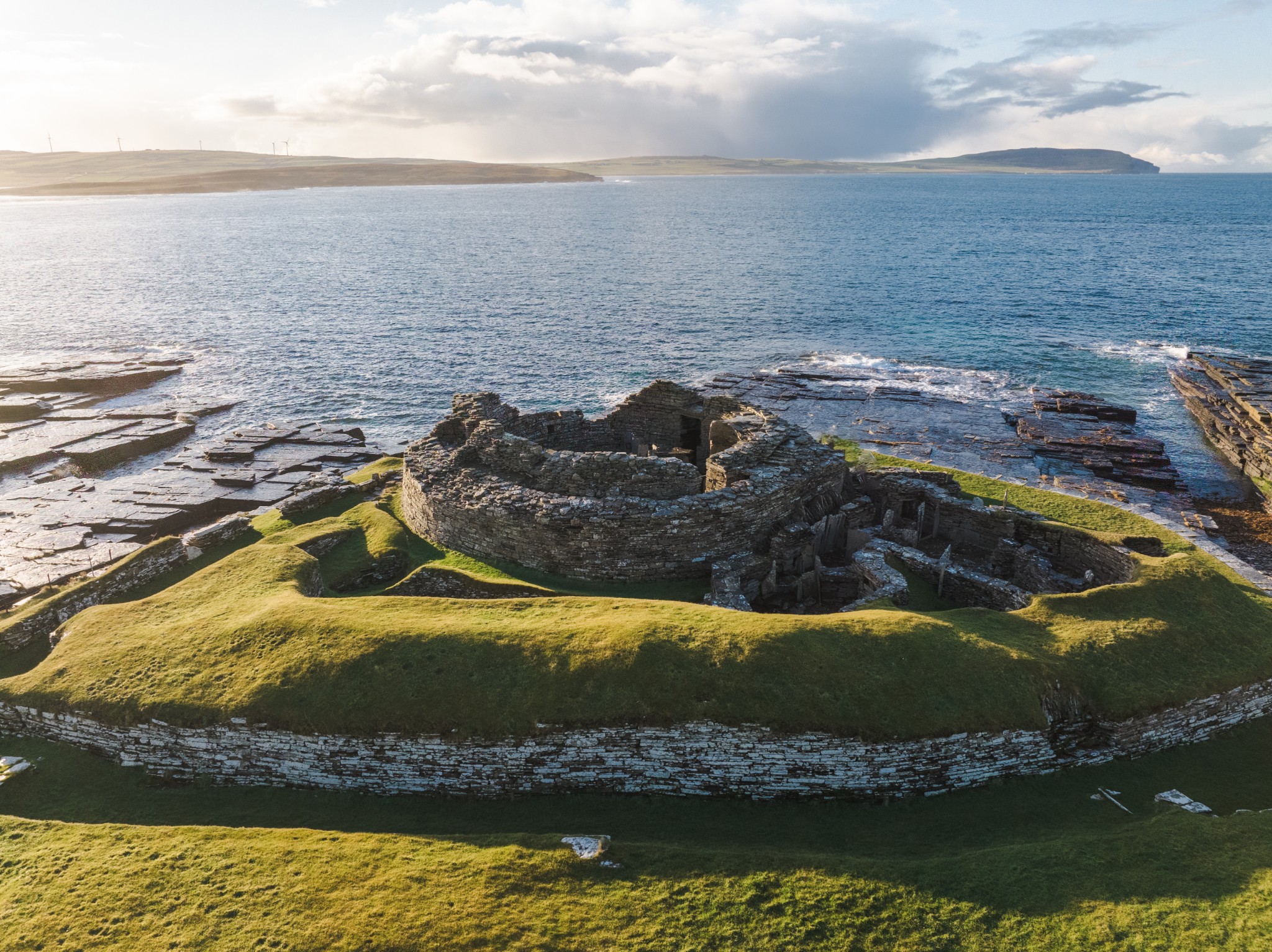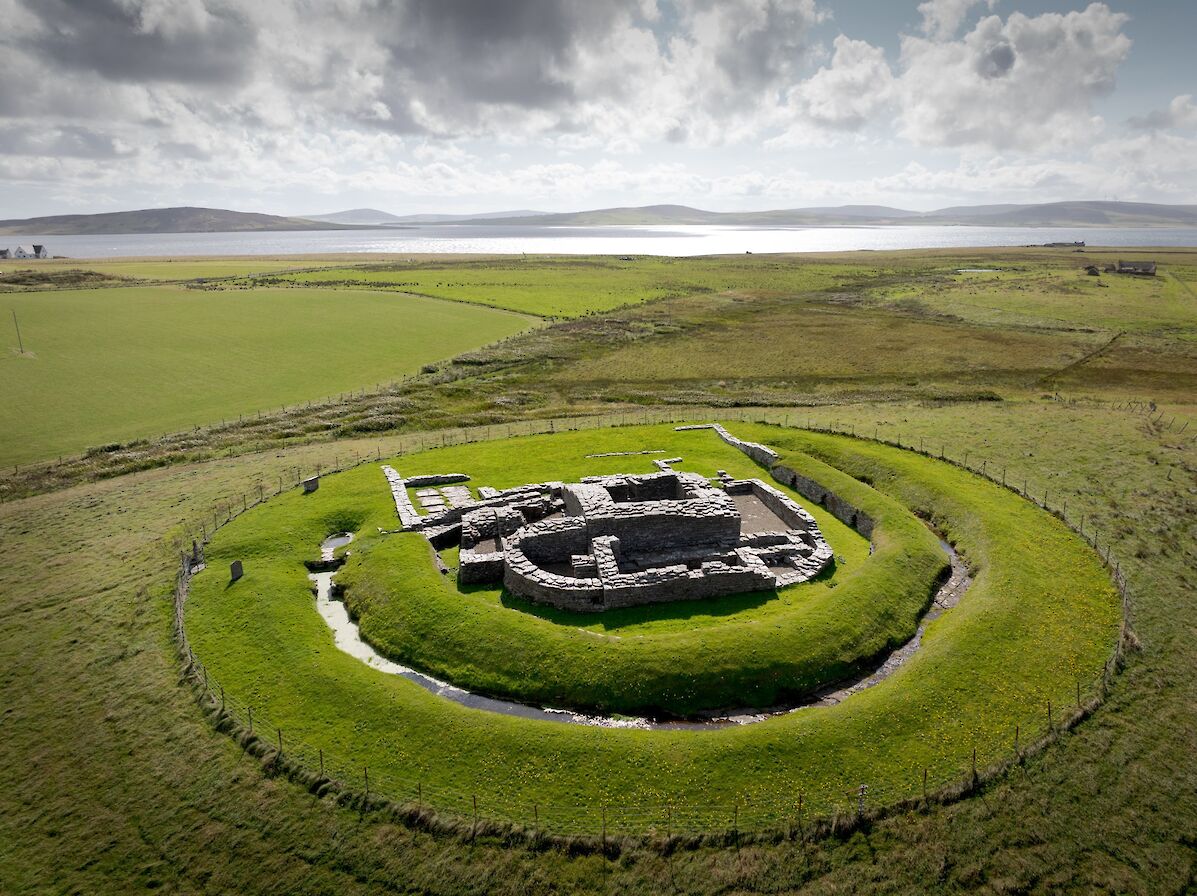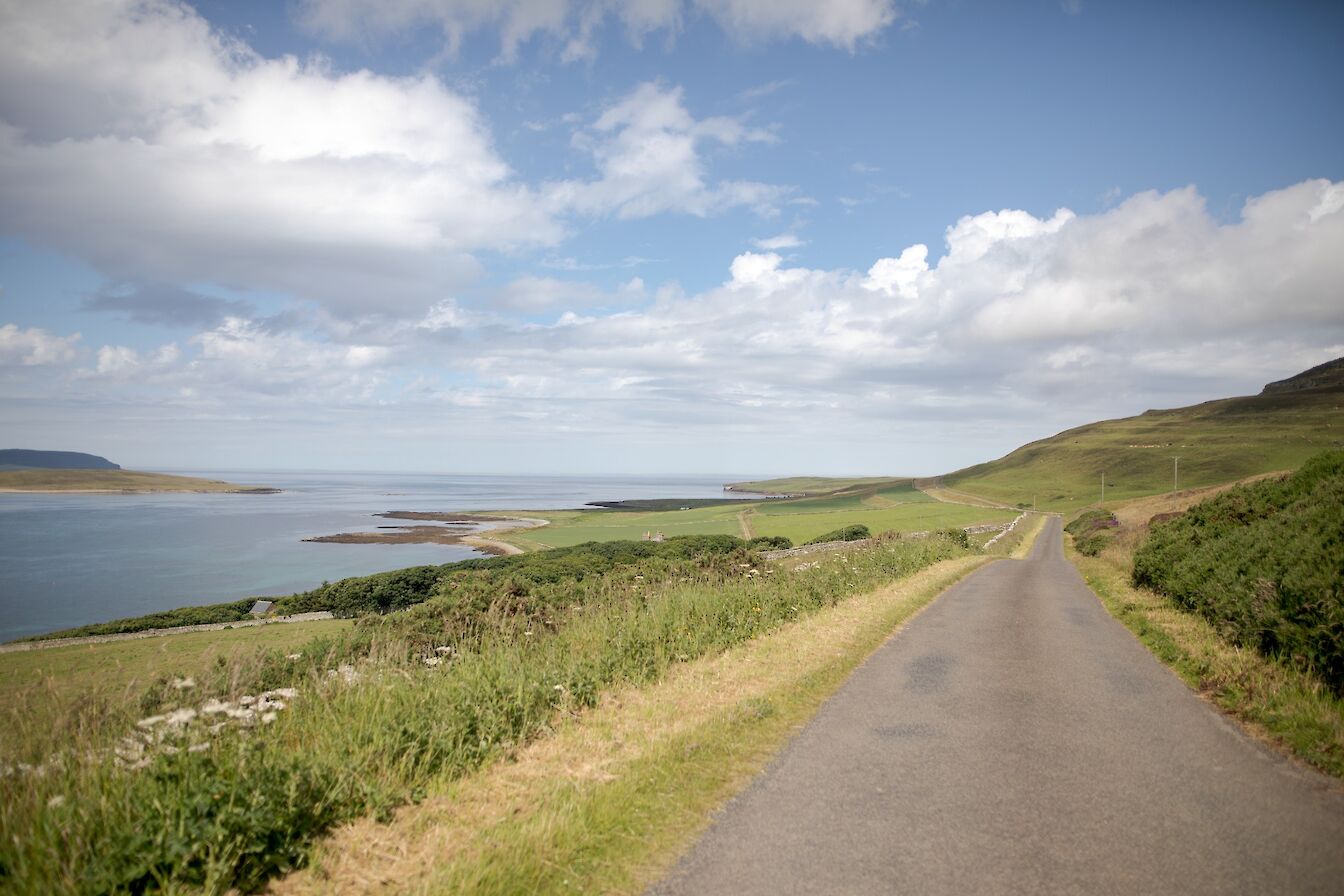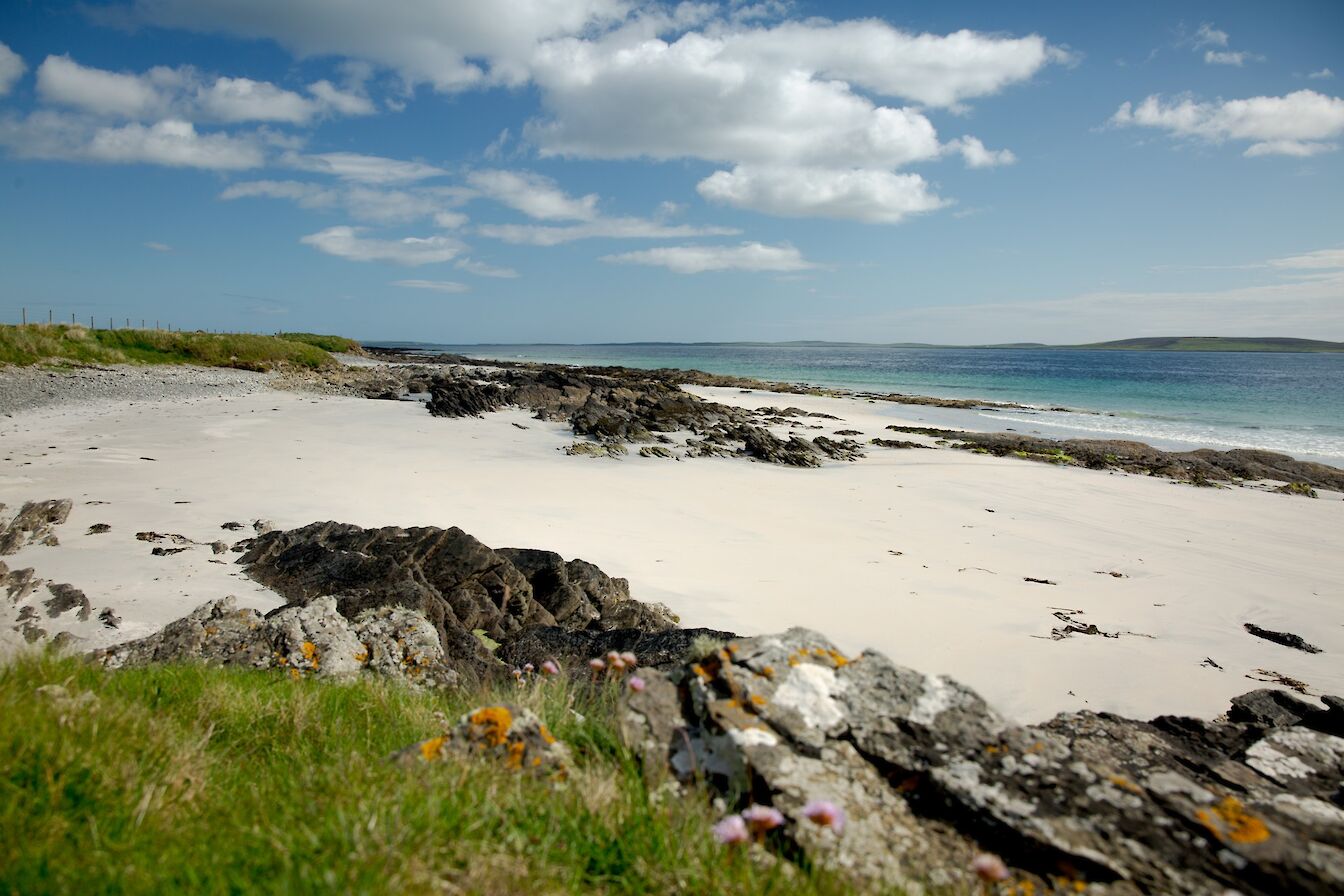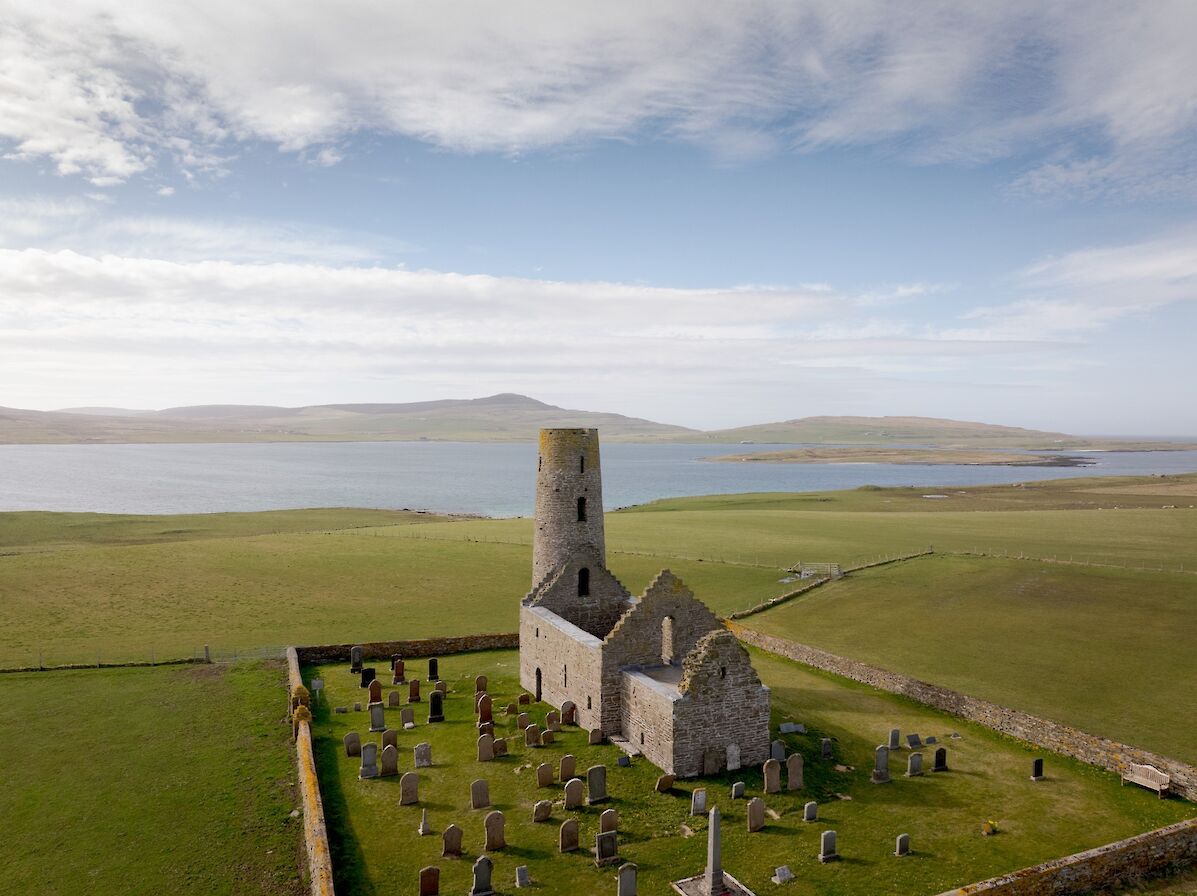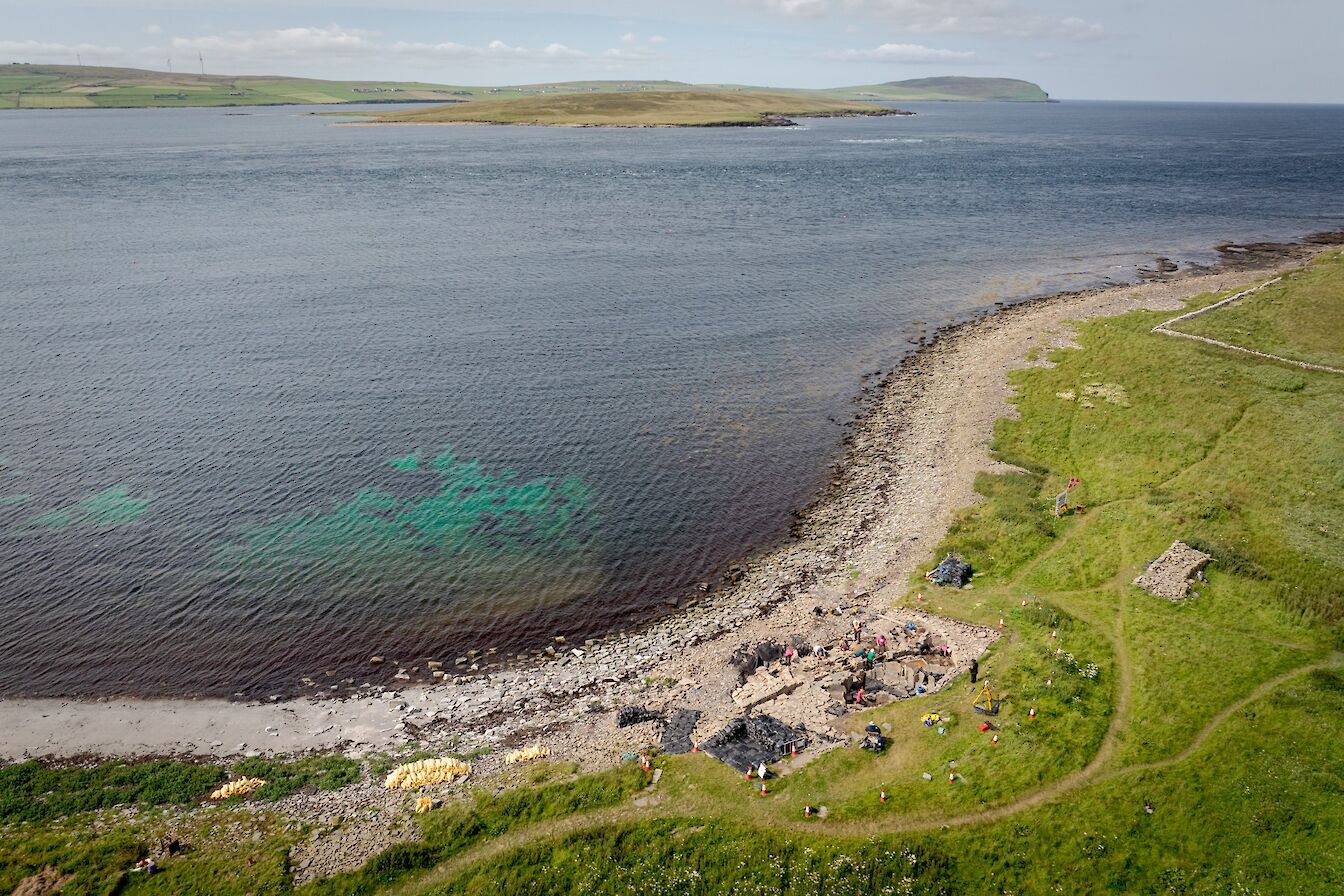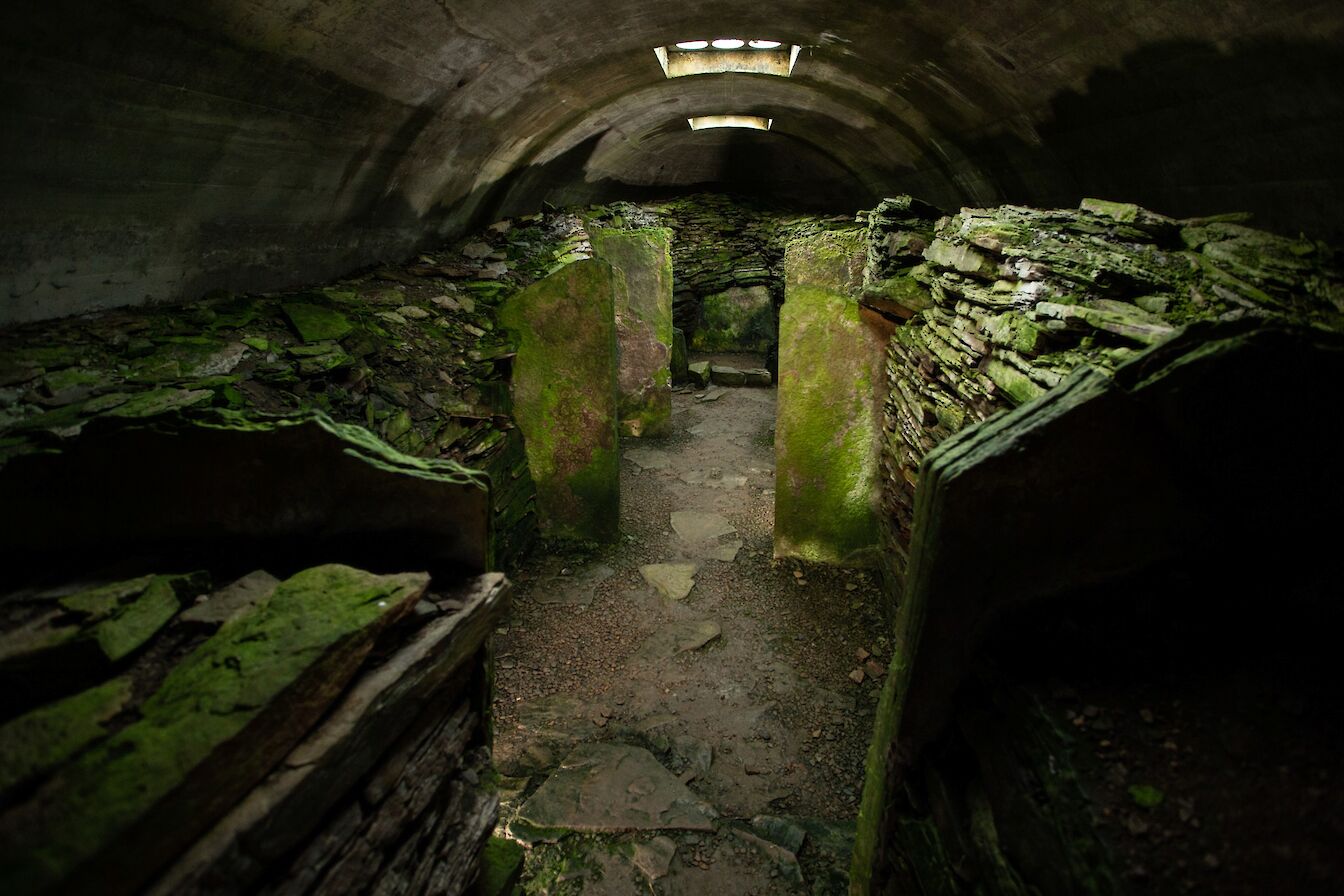Rousay, Egilsay & Wyre are often bundled together, but each island in this unique cluster comes with its own character and charm.
About Rousay, Egilsay & Wyre
Island hopping is a real possibility if you’re planning a visit to Rousay, Egilsay & Wyre, linked as they are by geography and a frequent ferry service. But, although they’re close neighbours, you can expect a different experience in each of these distinctive communities.
Rousay is the largest of the group and features swathes of moorland, terraced hillsides, and a dramatic coastline. Its wild landscape is home to some of Orkney’s richest archaeology, with more than 150 ancient sites across the island. Ongoing excavations show that there are plenty more finds waiting to be uncovered. It’s a haven for nature too, with its moors and maritime heath providing perfect habitats for a range of birdlife.
In contrast, Egilsay and Wyre are low-lying, green and fertile islands, where a lazy day can easily be spent wandering through green fields, bird reserves, and along the peaceful shore. They’re not short of an archaeological attraction or two either, both having played important roles in Orcadian history.
Useful information
- Food & drink
Food and drink options in Rousay, Egilsay & Wyre are relatively limited but there is usually a spot to stop for at least a cup of tea or coffee if the weather is a bit wild.
The Taversoe in Rousay offers good food along with fabulous views from its small restaurant, with lunches and evening meals available. It's also home to a licensed pub that’s open to islanders and visitors alike. Business hours change according to the season so check in advance before visiting, and pre-booking for meals is much appreciated. Find out more from the official website, phone 01856 821 325, email thetaversoe@gmail.com, or find the Taversoe on Facebook.
Just up from the Rousay Pier you’ll find Shore T’s, a small facility offering self-service teas, coffees, cold drinks and snacks. It’s an honesty shop system, so please leave a donation for anything you enjoy during a visit.
In Egilsay, the local community centre has self-service teas and coffees available, with an honesty box for donations. The island’s heritage room is next door, so you can find out more about the island’s history while relaxing with a cuppa. Wyre’s new heritage centre also offers self-service teas and coffees, with an honesty box in place too.
- Shopping
Rousay has the only store across the three islands. Marion’s Shop offers plenty of options for a picnic or a longer stay, with a range of fresh food, snacks, sweets and more. Opening hours are limited and the shop is closed on certain days, so check in advance before visiting. Phone 01856 821 365 or email rousayshop@hotmail.com.
- Fuel
Fuel is available at Marion’s Shop in Rousay with the same opening times as the store itself. Check in advance if you’re planning a visit - phone 01857 821 365 or email rousayshop@hotmail.com.
- Public toilets
There are toilets at the Rousay Pier with one gents’ toilet and one ladies’ toilet available. In Egilsay and Wyre, you’ll find accessible toilets at both island piers. The Egilsay Community Centre has a public toilet too.
Rousay, Egilsay & Wyre benefit from a frequent ferry service, keeping all three islands connected with each other and Tingwall, in Orkney’s West Mainland.
Getting to Rousay, Egilsay & Wyre
Orkney Ferries operates regular return sailings between Tingwall and Rousay, Egilsay & Wyre. Tingwall is in Orkney’s west mainland, around 25 minutes from Kirkwall. There is a regular bus service, route six, linking Kirkwall Travel Centre and Tingwall, which is integrated with the ferry timetable.
Not every ferry departure visits Egilsay and/or Wyre, so do check in advance, and make sure return sailings to either Rousay or Tingwall are available from the smaller islands if you’re not planning on spending the night.
Bicycles are accepted on Orkney Ferries. Book your ferry tickets online via the Orkney Ferries website and contact the ferry company directly for more information on all its services.
Getting around Rousay, Egilsay & Wyre
You can take a differing approach to visiting Rousay, Egilsay & Wyre.
Rousay is the largest of the three islands but is still relatively compact. The 13-mile-long main road circles the island and makes for a challenging but exciting cycle route. Many of the main archaeological points of interest and other sites are a short walk from the main road.
If you’re on foot, a walk from the island’s pier to Midhowe Broch will take most folk a little over two hours, but given the wealth of ancient attractions en-route you can expect the hike to last much longer. Cycling or bringing a car would be best, and would let you explore the lesser-visited north side of the island, which comes with some stunningly dramatic scenery.
Bike hire, including e-bikes, is available at Trumland Farm – phone 01856 821 252 or email trumland@btopenworld.com to book in advance.
Egilsay and Wyre are very much walking or cycling destinations – Wyre is only two miles long and a mile wide – so just stride out from each pier and explore via the quiet island roads.
Our Rousay walking and cycling routes are an excellent introduction to the island, and we also have an Egilsay walking guide too.
There are no car hire options in Rousay, Egilsay and Wyre.
Guided tours
If you’d like to visit Rousay in the company of an expert guide, Paddy Maguire at Rousay Tours offers detailed and entertaining tours, encompassing most of the main sites with added island information and stories. Picnic hampers are available too.
Find out more on the official Rousay Tours website, phone Paddy on 01856 821 234, or email patrick_maguire@hotmail.co.uk.
It’s all about archaeology when it comes to exploring these three islands, but don’t overlook the opportunity to experience some incredible nature and wildlife highlights.
Part of the joy of visiting Rousay, Egilsay & Wyre is the chance to get out and about in the great outdoors.
Our Rousay walking and cycling routes are an excellent introduction to the island, and we also have an Egilsay walking guide too.
Use the key below to explore Rousay, Egilsay & Wyre with our interactive map.




















Find your perfect home from home in Rousay, Egilsay & Wyre.
